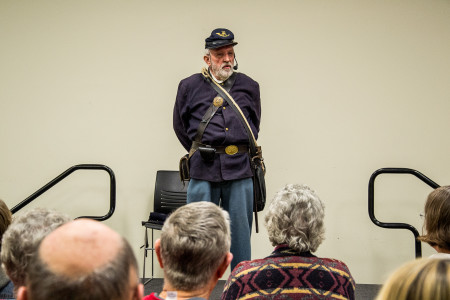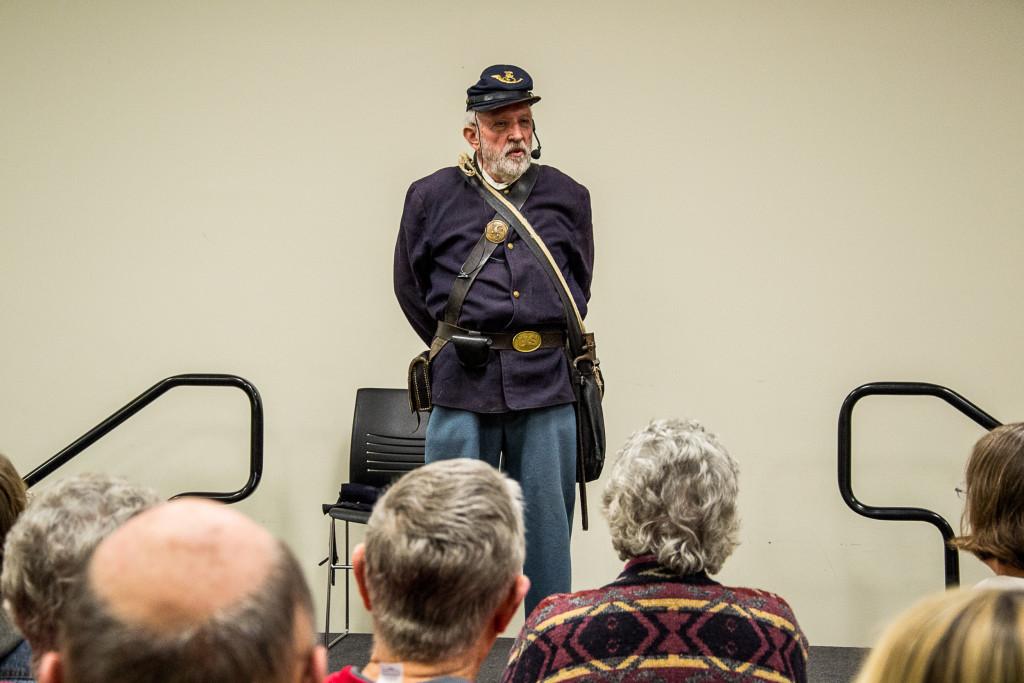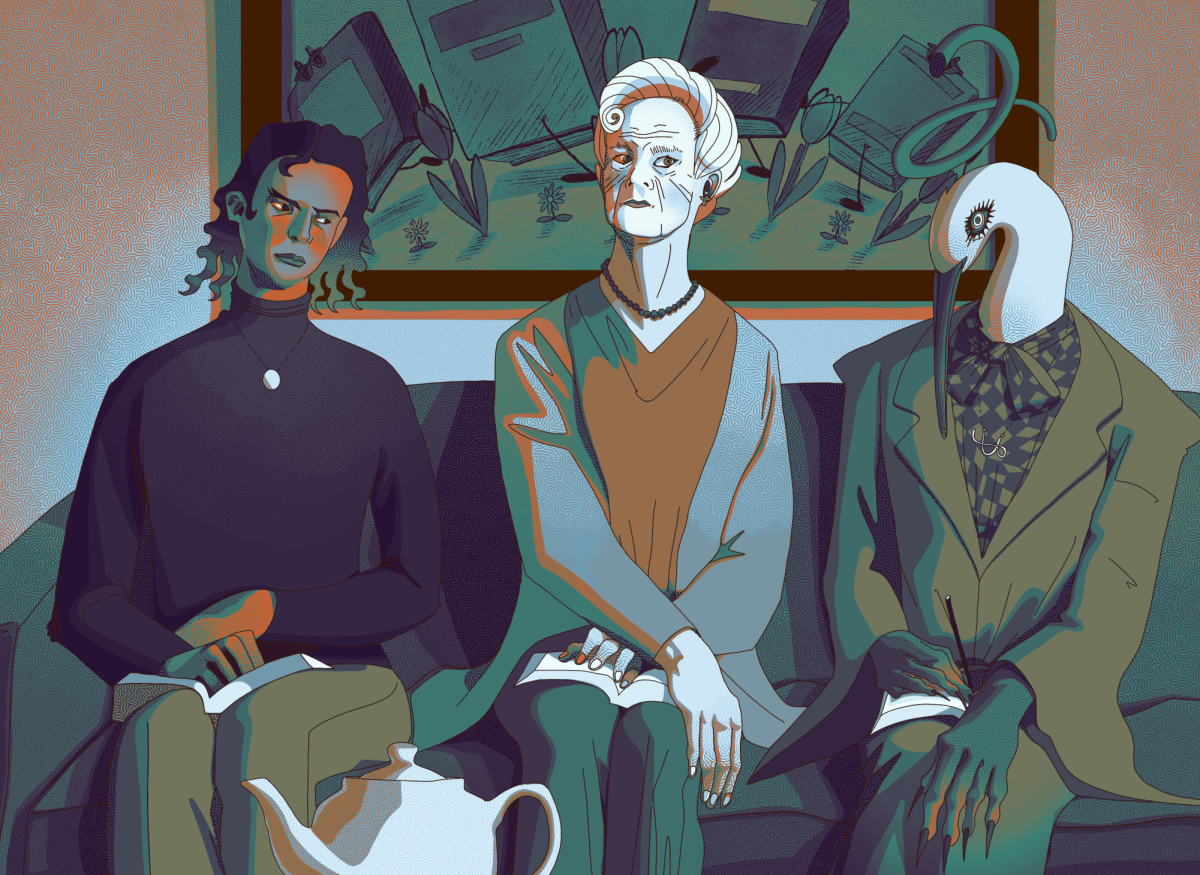
Photo by Sofi Mendez.
Sam Curry
currysam@grinnell.edu
Drake Community Library received a visit from another era this week as Civil War reenactor OJ Fargo gave a talk entitled “Just Before the Battle Mother—A Visit from a Civil War Solider.” Announcements for the talk promised a real veteran of the American Civil War, but Fargo’s comfort with a microphone and young age outed him as a resident of the 21st century.
Nevertheless, Fargo gave an admirable performance, depicting Private Thomas Goodfellow, a schoolteacher-turned-soldier with a compelling, detail-oriented look at the everyday life of a Union solider. His presentation, complemented by a display of Civil War memorabilia and choice selection of modern day desserts, focused on themes such as the monotony of everyday life in the Union Army.
Fargo emphasized that, although popular depictions of the Civil War focus on the heat of battle, most of the time troops were fighting off boredom rather than bullets.
“Everybody back home thought I was fighting Johnnies [Confederate soldiers] every day of the week … [but] we saw one maybe once every three weeks … on average we would fight … maybe once every thirty days,” Fargo said, in character as Private Goodfellow.
The talk also surveyed the accomplishments of the Iowa regiments, especially in comparison to their compatriots on the East Coast.
Fargo noted that, while Union soldiers on the East Coast took years to close in on Richmond, the Confederate capital located only a hundred miles from Washington D.C., units from Iowa marched through all of the South and perhaps played a larger role in the Union’s victory.
“While we’re cutting the Confederacy in half in Vicksburg, [Mississippi], [East coast soldiers] are basically fighting to a draw in Gettysburg. And who gets the credit for that day? Somebody else. All we did was separate three or four states,” Fargo said.
According to Fargo, Union soldiers from Iowa overcame boredom, long miles and disease to keep the fledgling United States together.
“After four years, we marched about 4,200 miles. Now I don’t know how far they marched out East, but it’s only a hundred miles from [Washington D.C.] to [Richmond], so they couldn’t have gone very far,” he said.
The talk was presented on Tuesday, Feb. 23, by the Friends of Drake Community Library. Drake Library received funding for the event through Humanities Iowa, a statewide affiliate of the National Endowment for the Humanities.





























































